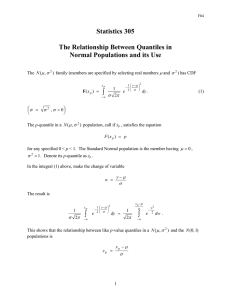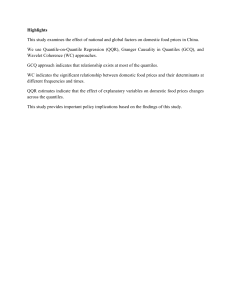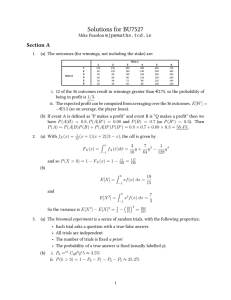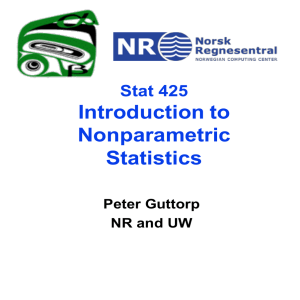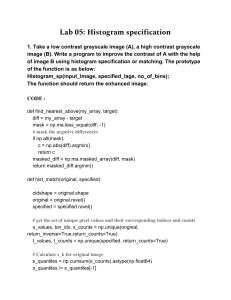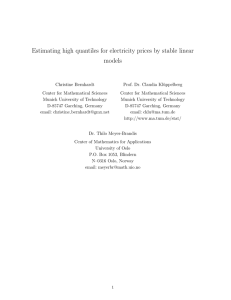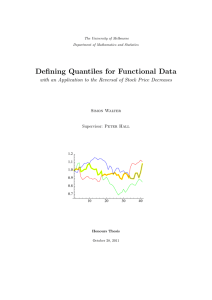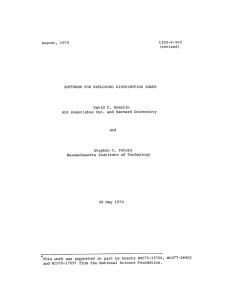Statistics 305 Scalar Numerical Summary Measures
advertisement
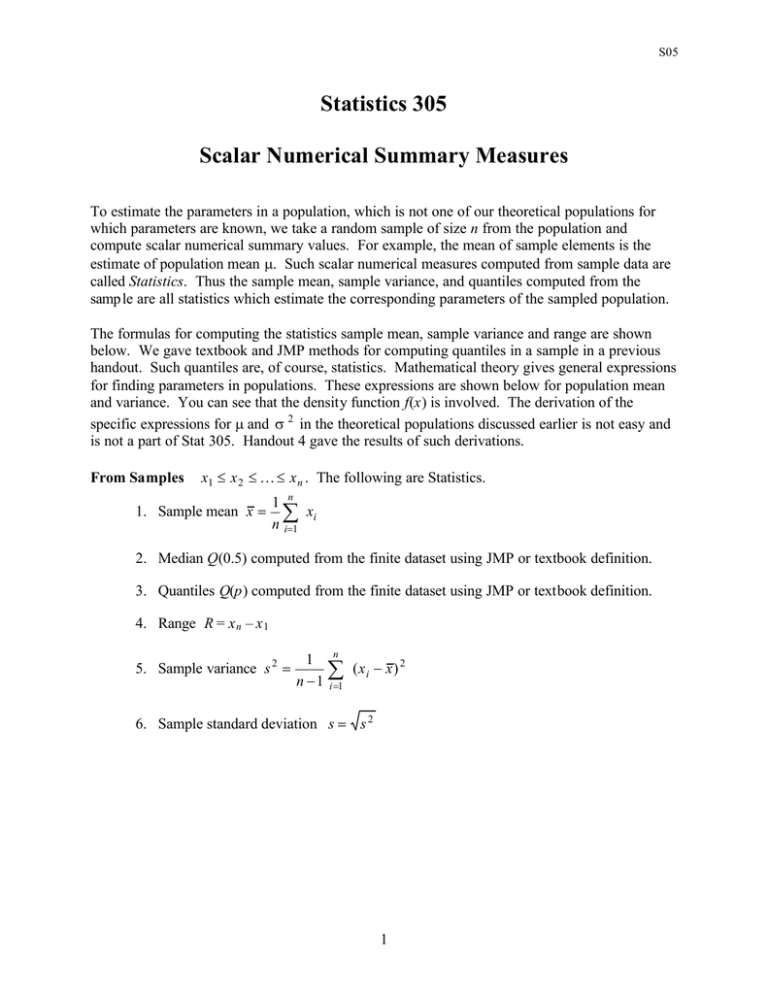
S05 Statistics 305 Scalar Numerical Summary Measures To estimate the parameters in a population, which is not one of our theoretical populations for which parameters are known, we take a random sample of size n from the population and compute scalar numerical summary values. For example, the mean of sample elements is the estimate of population mean µ. Such scalar numerical measures computed from sample data are called Statistics. Thus the sample mean, sample variance, and quantiles computed from the sample are all statistics which estimate the corresponding parameters of the sampled population. The formulas for computing the statistics sample mean, sample variance and range are shown below. We gave textbook and JMP methods for computing quantiles in a sample in a previous handout. Such quantiles are, of course, statistics. Mathematical theory gives general expressions for finding parameters in populations. These expressions are shown below for population mean and variance. You can see that the density function f(x) is involved. The derivation of the specific expressions for µ and σ 2 in the theoretical populations discussed earlier is not easy and is not a part of Stat 305. Handout 4 gave the results of such derivations. From Samples x1 ≤ x 2 ≤ K ≤ x n . The following are Statistics. 1. Sample mean x = 1 n ∑ xi n i=1 2. Median Q(0.5) computed from the finite dataset using JMP or textbook definition. 3. Quantiles Q(p) computed from the finite dataset using JMP or textbook definition. 4. Range R = x n – x 1 5. Sample variance s 2 = 1 n (x i − x ) 2 ∑ n − 1 i =1 6. Sample standard deviation s = s 2 1 S05 For Populations – The following are general expressions for Parameters, which are used to derive the parameters in Handout 4. Discrete Distributions Continuous Distributions 1. Mean µ = Σ xf (x ) µ= 2. Median Q(0.5) Q(0.5) 3. Quantiles Q(p) Q(p) 4. Variance σ 2 = Σ ( x − µ ) 2 f ( x ) σ 2 = ∫ ( x − µ ) 2 f ( x ) dx 5. Standard Devia tion σ = σ 2 σ = σ2 ( f (x ) is the Density function). 2 ∫ xf ( x ) dx
